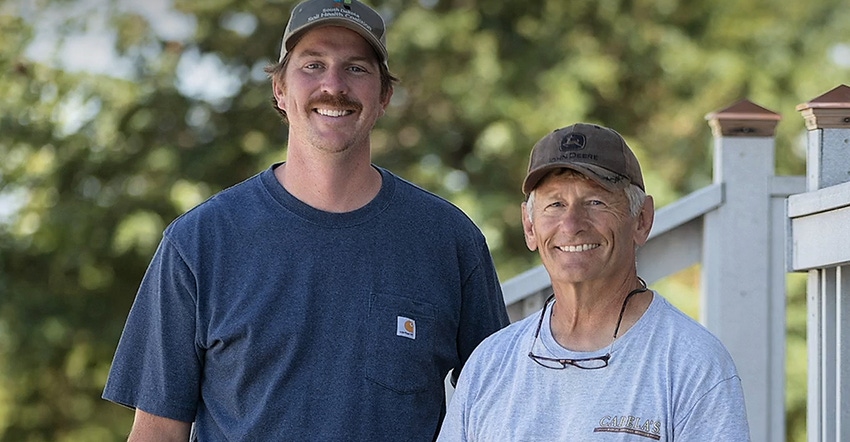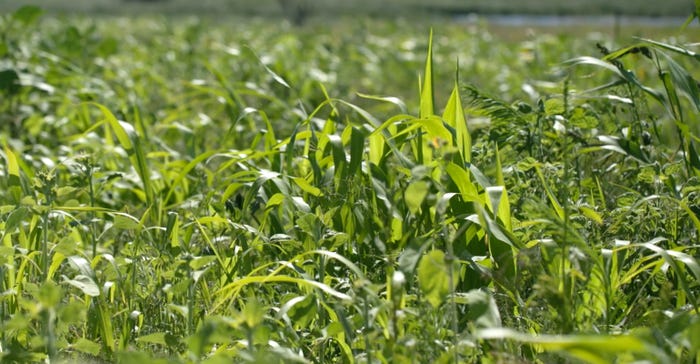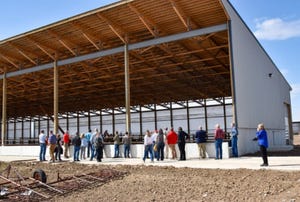Goals not just dollars define grazing lease
Three common goals united a tenant and landlord in a cattle grazing agreement.
January 26, 2021

Editor’s note: This is the first of seven stories on the relationship between landowners and tenants, and how soil health goals can be achieved more efficiently if both parties are on the same page.
Jerry Moench and tenant Mike Blaalid have a flexible lease agreement. Instead of a lease for grazing based on acres per year, it’s a custom-grazing lease with payment on the basis of how many head of cattle graze per day.
The two say there are some good reasons they don’t have a common lease agreement where the tenant pays a set amount of cash rent per acre and then grazes the land as sees fit. For starters, it’s not the best way to handle their owner-tenant relationship on grasslands.
“If you want more than a check, if you have specific goals in mind and want to also make positive changes on your landscape to set your land up for long-term productivity, you should sit down for a talk with your tenant about common goals,” Blaalid says. “You’ve got to put the time in upfront to develop a relationship with your landowner because change doesn’t happen overnight, and you need to build a partnership.”
He and Moench have a long-term relationship. “We knew each other well enough to really sit down and talk about the goals of both parties, and those goals essentially frame everything that we do on the land, that really drive us to make our decisions from day to day,” Blaalid says.
Focus on soil health
Blaalid has been a consultant to Moench for several years, conducting burns on the retired physician’s grasslands to encourage more native plants that would be beneficial to pheasants and other wildlife on Moench’s farm near Alexandria, N.D. There was a positive response to the burns, but the logistics of finding help to burn at the right time and working around the weather made the burns difficult to pull off consistently.
Moench became interested in soil health three or four years ago when he visited a farm that was involved in building soil with cover crops, and then started reading avidly and decided to try to institute some of those principles on his land.
“I think we both had an ‘aha’ moment when we read North Dakota rancher Gabe Brown’s book where he talked about degraded land and trying to put it back into grass,” Blaalid says. “That started the conversation to get cows out here and utilize his grass resource with cattle.”
Finding common goals
Blaalid first grazed cows on Moench’s land in 2018.
“We’ve created paddocks of 2 and 3 acres, and this year Mike had 68 cows out on that land,” Moench says. “We would let them graze a day or two, and then move them every few days. When the buffalo herds came across the prairie, they would graze the heck out of it, right down to the ground, and their hooves stimulated the plants. Then the herd moved on quickly, within two or three days. That’s what we’re trying to replicate here, and the difference in our grasslands has been remarkable.”

Moench says his farm has forbs that are leafy plants and multiple different grasses. That, in turn, allows insects for pheasants and other wildlife. “It gives more forage for deer and improves the entire wildlife situation, which of course is what we bought the place for.”
“Cattle were just the best option for us,” Blaalid says. “We could achieve two things — help his grass stand and create better wildlife habitat at the same time. He likes to pheasant hunt. We care about wildlife and giving them a place — that’s one of our goals we talk about regularly.”
Another goal is to rest the grass, Blaalid says, and regrowth from that is the advantage of moving cattle regularly. Better management on the farm has resulted in more grass than two years ago, increasing production by 50% pretty easily in some areas, he adds.
“There’s a richness in diversity here that wasn’t here before, and we’re very pleased with what we’re seeing,” Moench says. “Both people benefit. His cows grow healthy and I’m developing healthy land that’s being enriched instead of being depleted. I just don’t know how you beat that. Mike and I have a great relationship. It’s been fun to work with him. We’re like-minded, and I’m learning something all the time.”
It’s the partnership with his landowner that stands out for Blaalid. “It’s not always the case that you are like-minded and can make it a real partnership. But when landowners are involved, it seems like they get more excited. They see the results and they really want to make the changes and take the risks, which is what it’s all about.”
To hear their story, visit Non Operator Landowner (NOLO) by the South Dakota Association of Conservation Districts.
Betts writes from Johnston, Iowa.
About the Author(s)
You May Also Like

.png?width=300&auto=webp&quality=80&disable=upscale)
.png?width=300&auto=webp&quality=80&disable=upscale)
